The best car in the world. Daimler internal combustion engine
The engine is one of the main storage vehicles. Without a vineyard, the car engine, better for everything, rattled at the development of the wheel following the vineyard. Rivok in the history of the creation of cars internal fire. Whose attachment has become a real driving force, which gives speed.
Try to create attachments, similar to the dvigun of internal combustion, began from the 18th century. I’ll build my creations, for a moment to turn the energy of the fire into a mechanical one, they were busy with a lot of winemakers.
The first in this gallery were brothers Nieps from France. The stinks saw an attachment, which they themselves called "pyreolofor". Yak Palivo for this dvigun guilty buv vikoristuvatisya vugіlny saw. However, his guilt did not gain scientific recognition, and, in fact, he only slept in armchairs.
The first successful engine, which began to be sold, was the engine of the internal fire of the Belgian engineer Zh.Zh. Etienne Lenoir. Rіk narodzhennya tsy wine-growing - 1858. Tse buv dvotaktovy. electric motor with a carburetor and a spark of fire. Kam'yanovogіlniy gas served as a fire for power. However, the culprit, having not lied to the need for the cooling of his dvigun, did not have a long time to work on it. In 1863 Lenoir's roci had rebuilt his dvigun - having added the daily system and in the form of a paliva vvіv at the victorious gas.
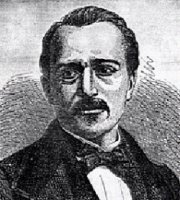
J.J.Etienne Lenoir
Priya buv vkray nedoskonalim - heated up strongly, inefficiently vikoristovuvav oil and fire. However, three-wheeled cars drove for the help of the new one, as if they were far away from perfection.
In 1864, one-cylinder wines were found carbureted engine pracyuє in the form of combustion of petroleum products. Siegfried Markus became the author of the wine walk, but he presented the bulk transport zasib that develops a speed of 10 miles a year.
In 1873, another engineer - George Brighton - designed a 2-cylinder engine. I worked a handful of wines on gas, and a year on gasoline. A small part of this dvigun was supermundane massiveness.
In 1876, fate became a riveting at the craftiness of the creation of the engines of internal combustion. Nicholas Otto having created technically foldable extension, which effectively converted the energy of the fire into mechanical energy.
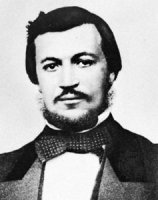
Nicholas Otto
In 1883, the Frenchman Eduard Delamare developed the armchair of the dvigun, for which gas serves as a fuel. However, yogo vinahid іsnuvav only on paper.
1185 in the history of the car industry are a lot of names -. Vіn zmіg not only to find fault, but also to launch a prototype of a modern gas engine - with vertically stacked cylinders and a carburetor. This is the first compact engine, which has acquired a decent development of mobility.
Parallel to the Daimler, above the folds of engines and automobiles, they worked.
In 1903, the companies of Daimler and Benz united, giving the beginning of a full-fledged car business. Thus began a new era, which served the farthest thorough dvigun of internal combustion.
The engine for a car, just like the car itself, will invariably appear in the last quarter of the last century. The first engine showed up, and then the pillbox was already running for 100 years without a break on cars. Rozmova go about piston engine internal combustion (ICE), which works on gasoline for a four-stroke cycle. About the design of internal combustion engines of other types will be discussed below.
The creators of the first transport DVZ were built in the design of the steam engine. How to grow more compact and productive? The biggest volume, before the well unsafe її elements - a firebox and a boiler. It means that they need to be replaced, the culprits vowed. Chim? The power supply was simple: the consumption tank was filled with fire gas, for example, a lamp. The gas needs to be crushed again, injected into the cylinder of the machine and spalled there. Gorіnnya that razshirennya sumishі zroblyat force, like to replace a couple. The firebox and the boiler are no longer needed.
Gas engine for Lenoir
As early as 1860, the French mechanic Etienne Lenoir (1822-1900) prompted a gas engine to predict a steam engine. However, by itself, the sum of the light gas and the pressure on the vіdmіnu vіd bet is not embossed on the piston. It is necessary її pіdpality. Two electric candles, lit at the top of the cylinder, were used for priming. Lenoir's engine is two-way (otherwise, as usual, it is a subway; the working process moves from two sides of the piston) and two-stroke, so that the second cycle of the piston works by pulling two strokes. On the first move, the inlet is taken in, occupied by that expansion of the sum in the cylinder (working run), and on the other move, the gas outlet, which was worked out. The inlet and outlet is controlled by a spool valve, and the spool is controlled by an eccentric mounted on the motor shaft.
The advances of the new engine in front of the steam engine were not limited by the liquidation of the boiler and the firebox. The gas engines didn't care about the betting, the service was unimportant. Unfortunately, the mass of the new dvigun was left with the very same masa, like that of a steam engine. A unit of vibrational exhaustion of an engine (k.s. or kW) cost 7 times more expensive than a steam engine. Only 1/25 of the heat of the burnt gas robbed the robot, so the coefficient of the core air (KKD) of the engine became 0.04. The reshta was vented with ventilated gases, stained on the heating of the hull and was introduced into the atmosphere. If the frequency of the wrapping of the shaft reached 100 rpm, the ignition was fiercely inappropriate, the engine worked intermittently. Up to 120 m3 of water was used for cooling for a year (!). The gas temperature was 800°C. Overheating after closing the spool. Unburned particles of sumish smeared the inlet-outlet channels.
The reason for the low productivity of the engine was attributed to the very principles of yoga. The pressure of the busy sum did not exceed 5 kg / cm2, and until the end of the working run it decreased by three. A simple design shows that a single-cylinder engine with a working volume of 2 liters for such a vice, a shaft wrapping frequency of 100 rpm and a CCD of 0.04 develops a troch pressure of more than 0.1 kW. In other words, the Lenoir engine is a thousand times less productive, the lower engine of the smallest car.

The creation of a swedish crew, which self-destructs, became possible after the wine movement of the dvigun of internal combustion, especially chotiritactic. Yogo working process - "Otto cycle" - has survived to this day. The diagram shows the number of wines effective for cob, proponation by E. Lenoir. Livoruch - the attachment of the dvigun Lenoir
In 1876, the most effective gas engine was built for the commercial service of Mykola-August Otto (1832-1891) from Cologne (Niechchina) together with Eugene Langen (1833-1895).
Away ... It is easy to praise or criticize the right wine-makers after 100 years. Behind their rare successes - the fates of workers, failures, misfortunes, stench worked in the minds of non-strike technical information, the availability of accessories, tools and materials, in case of inadequate upholstery ... For example, Otto's patent was taken away in 1889, the number of annulments, the shards of the chotiritactny cycle nibito obruntuvav earlier the Frenchman L. Beau-de-Rocha.
Only posthumously Otto's merits were recognized by the world's technical bulk, the cycle was called Yogo Im'yam. At the practice of "New gas and oil engines" French (under the armchair, French) statements G. Rishar wrote in 1892: "Without proponated by Otto working body - combustible sumish - modern engine without bi" and "Beau-de-Rocha is not guilty of chotiri tactnium cycle, zdіysneniya to the new one (with a zvnіshny squeezing of the sum) by Lebon in 1801 and (with a squeezing in the middle of the cylinder) in 1861 - Otto.
The principle of Otto's robotic engine
Now let's go back to the essence of winemaking. Inspire the work of an inspired gas engine, similar to the Lenoir one, Otto diyshov visnovka, which can achieve a productive work, as a result, the sum is not in the middle of the piston stroke, but on the cob. Todіk gazіv when zgorannі sumіshi dіyalo would be on the piston with a long stroke. How about filling the cylinder up to the cob? Otto tried this: wrapping the flywheel by hand, filling the cylinder with a screw, continuing to wrap the flywheel and spitting it in just one more time, if the piston turned at the outside of the camp. The flywheel abruptly "taking" the wrap, and until the next burning sumishi gave you only a weak post. Otto did not give any importance to the fact that the sumish bula was squeezed in front of the stinging, he took into account the improvement in the process as a result of the trivial expansion of the sumishi in the burning process.
Otto needed 15 years to construct an economical engine from KKD, which would be 0.15. The engine was called chotiritactnym, but the process of the new one was due to the pull of four strokes of the piston and two rounds of the crankshaft. The spool at the required moment opens access to the cylinder from the ignition chamber, where the gas is constantly burning. I saw the inflamed sumishi. Zolotnikov’s separation and zapaluvannya with a fingertips do not get stuck in today’s engines, but the Otto cycle has been saved up to our days. For this cycle, the majority of automobile engines is more important. I'll guide myself short description yoga.
During the first stroke, the piston moves out of the "dead spot" - the cylinder head, moving into a new distribution, when it starts to smoke, it is prepared by a special attachment (carburetor) fueling sumish. The outlet is closed. If the piston reaches the lower "dead center", the inlet one closes. With another tact, close the offense, open it. The piston, which is fitted with a connecting rod, goes uphill and squeezes the sum. What is the meaning of її embarrassment, what is especially supported by Rishar? Parts of the fire are approaching, it’s easier to get borrowed. The volume of the cylinder above the piston (that is, in the combustion chamber) is equal to that of the working volume (mіzh " dead spots”), then the pressure stage is more advanced than 2, like in early ICEs (that is twice more than atmospheric pressure), and the pressure of gases with their vibration is four times greater than atmospheric pressure (for modern engines, it is 40-50 times more, lower for the Otto engine). The third measure is a working walk. On the cob of yoga, there is a burning of a clenched sum. The piston movement through the connecting rod is converted to the wrapper of the crankshaft. Offended, open the close. The pressure at the cylinder gradually changes to atmospheric. At the fourth stroke, the flywheel, after taking off the impulse, continues to turn around, the connecting rod puts the piston and blows the gas into the atmosphere through the exhaust opening, the intake is closed.
The inertia of the flywheel is rushing and on those, so that the piston is roaring for three more moves, repeating the quarter, the first and the other cycles. After them, the shaft and flywheel will gain momentum again. When starting the engine, the first two strokes are fired under a surge of sound power. In an hour, Otto and more, the flywheel was turned by hand, and now the electric motor is wrapping the starter. After the first few working steps, the starter automatically starts up and the engine works independently.
The inlet and outlet open the curve and close the rozpodilchiy mechanism. Timely borrowing the sumishi secures the zasalyuvannya system. The cylinder can be re-rolled horizontally, vertically, or worse, the process of the robotic engine does not seem to change.
Until the nedolіkіv dvigun Otto one can see the quietness of that great mass. The increase in the number of wraps to the shaft up to 180 per piece led to interruptions in the work and a slight wear of the spool. great vise at the cylinder crank mechanism and walls of the cylinder, so the weight of the engine was 500 kg per 1 kW / year. A large tank is needed to accommodate the entire gas supply. Everything was a disaster: Otto's gas engine, as the first variant, unsuitable for installation on a car, wide-width proteo in stationary minds.
Daimler internal combustion engine
The engine of internal combustion, becoming an adjunct for stasis in transport, after that, having earned it on a rare fire, gaining speed, compactness and lightness.
The largest contribution to this creation was made by machine engineers of the 19th century - the technical director of the Otto plant in Deutz G. Daimler (1834-1900) and his closest companion V. Maybach (1846-1929), who later fell asleep mu.
It is not uncommon to write about the vineyards of cars, that the stench of the childishness was choked with technology, they were tinkering with accessories, they were picking up the yearbook, which was the idea of the future new machines the stinks vinoshuvali little not z pelyushok. And more to write, that the wine-makers, talking, assimilated її imovіrne socially and economically significant. Really, on the right, sound bula іnaksha. Mi tse already bachiled on the butts of Kulibin, Kunho and Bolle. Ale in Gottlieb Daimler and Wilhelm Maybach's biographies of "smart" wine-makers. Daimler from his youthful years devoted himself to cars, consequently accumulating knowledge of locomotives. Successfully graduated from the Higher Technical School near Stuttgart. Under the hour of three years of service in Alsatia at the English machine-building factories, Daimler kindly adopted the advanced technology for that hour and before that, volodiyuchi French and English language, cutting off access to wide specialized literature. Yogo's back was just groaning about the construction of the machine. Then, like rich designers, the thought about the life of another, third version of the car, improvements for the permission of the work over the front, and about її sales. Here drink appears, commercial mirkuvannya is born. This is the most typical scheme. In this way, Daimler's cousin, a mathematician and a political dyach, a broad-minded person pulling out of the house, having helped his mind, without being himself a builder for construction. And the “genius” (as biographies called him) self-taught Maybach was assisted by Daimler himself.
Ale persh lower to construct and be a vіzok, which is collapsing, it was necessary to create for a new dvigun.
In the official company (1935) biography of Daimler, it is said: “In 1881, Daimler had conquered Russia in order to get to know naphtha in the field; transport engine… 1882 became a turning point in the life of Daimler. Tsey rіk can be vvazhat rock people car engine, wanting the dvigun buv himself to be ready for more offensive fate.
Why did Daimler need more expensive to Russia to think about it? Russia has already developed a plant from the distillation of crude oil into gas. Khimik A. A. Yearly experiments and experiments on the distillation of naphtha and surpluses through the opening of the pipes and the production of different products, sour cream, such a palne, like gasoline. Light naftove fired the same time that Daimler whispered for the crew engine: it steams well, it burns quickly, it is easy to transport.
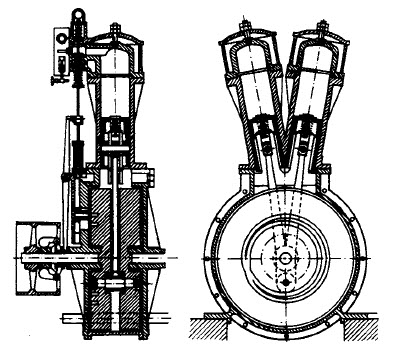
One of the first engines of G. Daimler is a two-cylinder, so rank U-like.
Daimler's first engine was suitable for both transport and stationary traffic. Pratsiuvav on gas and gasoline. Usі pіznіshi designsії Daimler razrahovanі vykljuchno rіdke palvo. The great frequency of wrapping the shaft of the dvigun, which is safe, zocrema, intensive borrowing of the sum, Daimler rightly respected the head indicator of the robotic dvigun transport machine. The frequency of wrapping the shaft of the Daimler engine was 4-5 times greater, lower in gas engines, and reached 450-900 rpm, and the pressure per 1 liter of working volume was twice as high. Obviously, the weight could have been changed. To these strokes of the “transport specifics”, we add the closing of the crankcase (casing) of the engine, buttermilk and protecting the ruffled parts of the saw and the wood. Cooling is carried out in the new engine of the “shirt” by squeezing the plate parts of the radiator. A crank handle served to start the engine ... Now everything was necessary for the creation of a light crew, for self-destruction - a car.
In the face of their ancestors, the car has slumped richly. "A car ... is necessary to bring in the name of a steam locomotive, that it gave it a soul, and a bicycle, that it provided it with a body," one of the Russian magazines wrote so figuratively in 1902. A mechanical visa for your work does not depend on any ground-based outbuildings, Crimean roads. On the vіdmіnu vіd kіnіh vіvіv mechanical not vimаgaє for its rush zastosuvannya manpower, krіm small, as it was given, zusil water from cheruvannya it. Let's say that the idea of a car was clearly aimed at replacing a light crew of a special coristuvannya. Possibility of yoga voicing for vintage and mass passenger transportation looked deeper.
Today, the engines of the internal fire will practically alienate us from our sides - the number of cars is dying in hundreds of millions. In addition, they stop at the rich and other outbuildings - from generators of electric jet to aviation. Ale, with all their variability, the principle of their work is the burning of a rare fire in a bag of sour in a small chamber. When you need to see microbiome high vise the type of gases that expand, move the head of the moving part of the engine - the piston. Principle, zagalom, simple, ale tsikavo, who came up with yoga first?
And the first person, yak vyrishila vikoristovuvat energy paliva for the creation of the dvigun, was the French engineer Philip Lebon. In 1799, rotsі vіn vіdkriv so ranks light gas, which was formed from sumіshi water, methane and carbon dioxide. To the same fate, they patented a method of obtaining gas from the village of chi vugillya. Nadalі tsey gas began to zastosovuvat widely for lighting - near gas lamps.
Ale Lebon did not hesitate. Already in 1801, he patented a gas engine. In this construction, the working cylinder is injected again and again, squeezing the light gas, and then spalahuvav and bringing the piston to the ruh. What a cicavo - the combustion chambers were located on both sides of the piston and worked according to the needs, so that the engine robbed the core of the robot steadily and is guilty of developing a good tension. The tragic death in 1804 interrupted the work of this talented wine-maker.
Let's go, who, having taken up the idea of a dvigun of internal combustion, was the Belgian mechanic Jean Etienne Lenoir. Vіn tezh vikoristav illuminating gas, but having invented spalahuvat yogo for an additional electric spark. Vіn navіt having created the first working dvigun, which worked in a rather small way - a piston, which expanded due to temperature, jamming at the cylinder. In another modification, Lenoir zastosuv water cooling, and then vikoristovuvav oil piston. І odі dvigun zapratsyuvav like next. In 1864, Lenoir's rotisserie sold 300 engines, but stopped refinishing them, and suddenly perfect designs appeared.
The German winemaker August Otto, having patented his design of the engine in 1864, later completed it. Tsey dvigun was even more popular, but he was a serious nedolіk - like a pale vikoristovuvavsya that very light gas.
In 1872, an American named Brighton came up with the idea of vikoristovuvaty like a hot gas, and then - gasoline. But it was necessary for the homeland to convert to gas, in order to take off the fuel-gasoline sum, so Brighton and foresaw such an attachment - a carburetor. Only the axis of pratsyuvav vіn is bad.
І axis, in 1883 rotation benzy new dvigun. And the wine's yogo German engineer Gottlieb Daimler. Daimler worked with the firm Otto, and he was shown the first project, but ignored it. As a result, Daimler and his friend Wilhelm Maybach began to work on the new engine independently. Otozh Otto and having shown his happiness, to that, as a result, he is compact, light and hard moving.
At the same time, the engines of the internal combustion of the flooring have expanded widely, so that the budget of the wealthy countries can be deposited in the sale of oil, for which gasoline is produced. Now it is no longer people who control the engine, but wine. Explore the creation of fundamentally new types of engines, cheaper and environmentally friendly.
For example, the Japanese presented a flying model of a car that works on water. What can be cheap and affordable for water, like on a planet bigger, lower land? Modern technologies allow you to take energy practically no matter what.
So axis, cei Japanese carіsnuє in a single copy - yogo zrobili for registration of a patent. What can? And maybe wines in a liter of water, whether it’s like a quality - from the woods to the sea, abi without ford, pass the whole year, before that, at a speed of 80 km / year. Do you see? Taking a dance of water - and ride yourself to your health, and skinny - you can get more from the river or from the tap.
What is the future of such cars? It would have been - without a hitch. Ale… there are gasoline producers and exporters of naphtha… The whole world has long been subdivided into the sphere, and it’s new, which destroys the primary order, and it’s more – the manager of shkodi, shvidko pripinyaetsya or hovaetsya in the box. You can't beat the monopolies. Patents of such technologies are seen reluctantly. Ale, as you know, maybe an idea and try your way.
Designate the back of the varto, which it is impossible to attribute authorship in this gallery to anyone specifically.
For example, already in the manuscripts of Heron of Oleksandriysky (150 BC) there was a parole, that it was possible to win the power of betting to drive the mechanisms of that collapse. Hell, Leonardo da Vinci made a similar thought. In 1643, Evangelist Torricelli's roci described the forceful vpiv vpiv try. Ale stinks are so devoid of the authors of ideas. The authors (creators) of the ICE were others.
In 1680, the Dutchman Christian Huygens, having designed the first power machine, was based on the phenomenon of expansion of gases in cylinders with the vibration of gunpowder. In fact, it was the first dvigun of internal combustion!
Physicist Denis Papin saw the work of the piston at the cylinder. In 1690, Marburz wines created a steam engine, which made the robot work for the heating and condensation of the steam. Tse buv is one of the first steam boilers. The design of the steam engine (cylinder and piston) was suggested to Denis Papin by Leibnitz. With the help of rich engineers, the steam engine was completely finished, among them was James Watt, who was the first to use the term “female strength” for the meaning of tightness.
Small majsterns could not be run fast by a steam engine. On the right, in the fact that such a dvigun maw is also a low KKD (less than 10%). In addition, yoga victoria was tied with great vitrates and turbots: in order to start yoga on the run, it was necessary to make a fire and make a bet. It took more than an hour to get a car, and it was necessary to constantly trim it in pairs. It was awkward. For drіbnoї promyslovіv buv dvigun of small force is needed, which takes up little time, which could be launched and started at any hour and without further preparation.
Alessandro Volta (1777): in a capsule, she was fed for additional electrical sparks with coal gas. In 1807, the Swiss Isaac de Rivats took away a patent for victorious summish povidrya with coal gas as a means of generating mechanical energy.
1801 rec. Philip Lebon
At rest river XVIII century French engineer Philip Lebon(1769–1804) illuminating gas. Tradition ascribes to yoga success vipadkovnosti: Lebon wafted, like having blown off the gas, that he turned the vessel with the tyrsus put on the fire, and sensible, like the melancholy can be taken from that manifestation. In 1799, he took off a patent for victoria and a method of taking light gas off by way of dry distillation of the village or vougillya. Tse vіdkrittya is of little great significance, let's think about the development of lighting technology. In France, and then in other parts of Europe, gas lamps began to successfully compete with candles. Proteoluminous gas was suitable for lighting. 1801 Lebon received a patent for the design of a gas engine. The principle of the machine's divergence was based on the power of the gas injected by it: it swelled from repeats when it was ignited with the vision of a great amount of heat. The products of the mountain expanded rapidly, placing a strong pressure on in the middle. Having done a good mind, you can win the energy, which you see, in the interests of the people.
The Lebon engine had two compressors and a mixing chamber. One compressor can be pumped into the chamber again, and the other one is squeezed light gas from the gas generator. Gasoline bag came up to the working cylinder, de spalahuvala. Dvigun buv podvіynoї dії, so the working chambers, which alternately actuated, were on the sides of the piston. As a matter of fact, Lebon vindicated the thought about the dvigun of internal combustion, died in 1804, having not entered into life his guilt.
Ale yoga idea continued to live! Actually, the principle of the gas engine is much simpler, lower than the steam engine, to that it’s hot to work the vice on the piston itself, just like in the steam engine, the heat energy is transferred to the nose - water vapor, which is to work the core of the robot. At the onset of fate, a sprig of vintners from different lands tried to create a practical engine on lighting gas. However, these samples were not produced before the engines appeared on the market, as they would successfully compete with steam engines.
The great rock of destruction was coming in 1825, if Michael Faraday took benzene out of the stone vugill, it was sooner a fire for the engine of the internal fire.
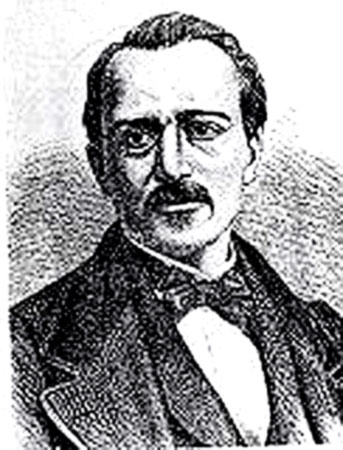
1862 rec. Etienne Lenoir
Etienne Lenoir(1822-1900) was embarrassed to lose his dream of becoming an engineer and becoming a practical waiter at the unsightly restaurant "The Bachelor Parisian". Among the beneficiaries of the pledge, the masters of the machinist and the mechanics often spoke. So, serving snacks and distributing alcohol, the young man is alive with the problems of mechanics and engineers, and in his head, having already started the people, a courageous plan from the principle of such marvelous perfection, like a dvigun. Nezabarom, zalishivshi garson, Lenoir entered pratsyuvati in one of the maisteren, de yogo ob'yazyazka was the folding of new enamels. Approximately across the river, after cooking with the master, Lenoir became the same mechanic, who worked all the steps - from crews to the exits of that kitchen stuffing. Popratsyuvavshiy this hour and do not reach any podyaks, no pennies, entered the mechanical and livar mortgage of the Italian Marinoni, who, for the help of Lenoir, turned into a galvanoplastic maisternya. Nareshti Lenoir poviv nebіvnі zhіttya і otrimav possiblіїї і for eksperimental'nym vinakhіdnitstva. Todі vіn having created his own variations of a low-power electric motor, a dynamo regulator, a water domir. Lenoir, having patented all his wines, went on to continue.
The first, final glimpse of the dvigun greeted Lenoir and his sponsor Marinona with his noiselessness. Buli y minusi - vіn duzhe hotly heated up for an hour of work and vimagav fundamentally less cold. Through a legal blunder, Lenoir's car was sealed up, however (there is no evil without good), the very thing brought it to the creation of a powerful company. The company for the release of gas engines "Lenoir and Co." Motor Lenoir, pressure 4 kinsk forces, The French firms "Marinoni", "Lefevre", "Gautier" and the German firm "Kun" vibrated.
In 1860, Lenoir took away the patent for his wines, and in the same year the German engineer Otto got to know the engine, which, together with Langen, created a company for the production of such engines. The company itself, as a half-heartedly glorified Lenoir's father, took away his laurel.
Lenoir's car was successfully demonstrated at the Parisian exhibition of 1862. The French magazine "Ilustrasion" made public the description of Lenoir's omnibus - a three-wheeled eight-seater crew with a cis engine. Tse buv tsikavy hour - the hour of engineering zukhval and non-executive ideas and opportunities. Naismilivish that revolutionary solutions did not give peace to the brilliant "techies" in the whole world - ahead of the progress. In 1872, Lenoir's gas engine was installed on an airship in 1872, the tests were successful. However, the glory of Lenoir was not long-lived - already in 1878, the roci of the yogo were around the Germans - loud and cumbersome 4-stroke machine of the yogo big colleague Otto with a large vertical flywheel wheel, worked out of KKD equal to 16%, todiyak two-stroke engine Lenoir wine reached only 5%. Bezperechno, a record of beatings.
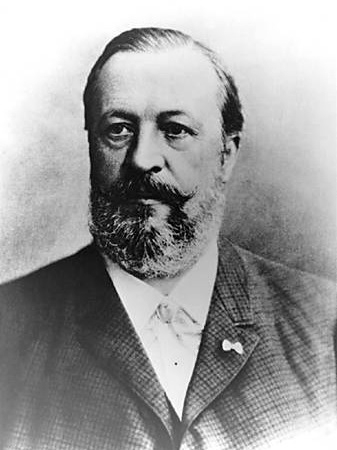
1878 rec. Serpen Otto ta yoga tacti
In 1864 roci Serpen Otto having taken away a patent for his model of a gas engine, and at the same time he signed an agreement with a wealthy engineer Langen for the operation of the winery. It was not without reason that the company "Otto and Company" was created. At first glance, the mover Otto bov krok back at the side of the mover Lenoir. The cylinder is vertical. The drag that wraps around, rushing over the side of the cylinder. Uzdovzh axis of the piston to the new boulo was attached to the rail, tied to the shaft. Dvigun pratsyuvav so. The shaft, which wraps around, lifts the piston, as a result of which, under the piston, the space is discharged and the air is wetted. Potim lost the sum.
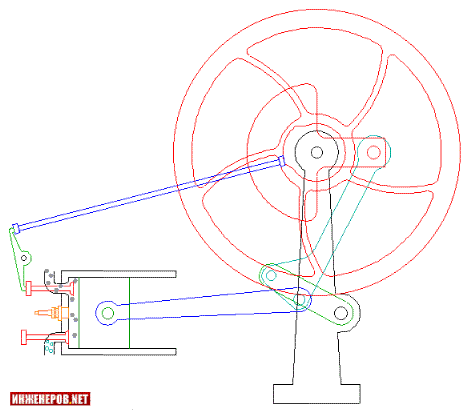
Neither Otto nor Langen had sufficient knowledge of electrical engineering and learned about electrical priming. Burning stench wafted through the tube into the half-lights. Under an hour of vibration, the pressure under the piston grew to approximately 4 atm. Under the infusion of this vice, the piston rose until the hour when the discharge was taking place under it. In this manner, the energy of the fire, which burned up, was victorious in the engine with the maximum fullness. Otto's original knowledge of Otto's was supposed to be his head. The working stroke of the piston started down under the influx of atmospheric pressure, the exhaust valve opened, and the piston with its mass took off the gas. Through a greater expansion of the products of the development of the KKD of this engine, we significantly increased, lowered the KKD of the Lenoir engine and reached 16%, so that the KKD of the best steam engines of that hour was overturned.
The biggest folding problem for such a design of the engine was the creation of a mechanism for transferring the rack to the shaft. For tsієї meti bulo wine, special transmission attachments with bags and crackers were found. If the piston with the rail turned on the corner, the croutons, which stupefied the shaft with their frail surfaces, so interacted with the bags, so that you did not cross the relocation of the rail, but just a little, the rail began to crumble down, the bags slipped along the frail surface of the croutons and strongly pressed them to the shaft. turn around. Tsya design ensured the life of the engine.
Oskolki dviguni Otto boules could be 5 times more economical for Lenoir's engines, the stench immediately became a great drink. At the offensive, about five thousand pieces were fired. Otto hastily worked on the improvements of his design.
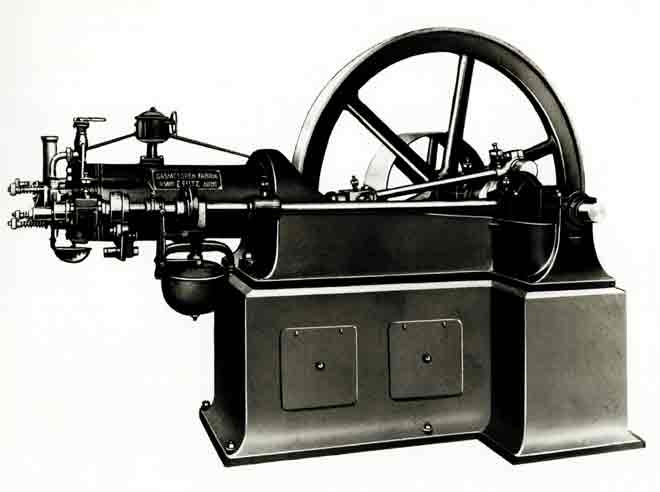
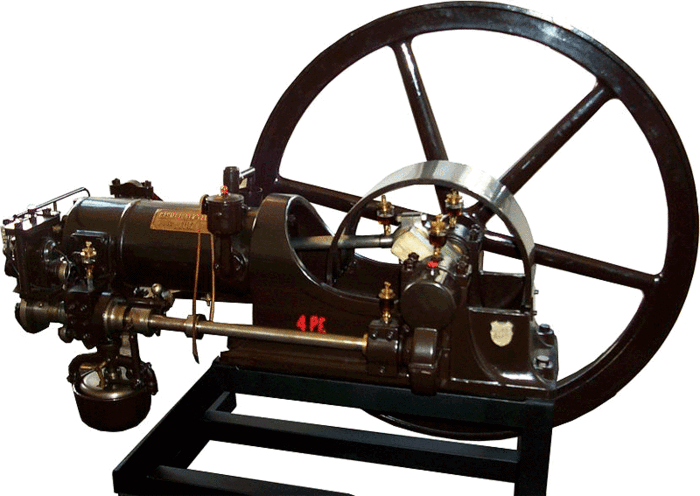
Nezabara gear rack was replaced by a crank gear (a rich bentezhiv look of the rack, which angered uphill with a stretch of a second, before that, it was accompanied by an unacceptable gurkot, scho bryazkotiv).
But the most important of these wines was broken up in 1877 when Otto took out a patent for a new engine with a quick cycle. This cycle is the basis for the operation of large gas and gasoline engines. І 1878 the year of new engines was already launched at the factory.
In all early gas engines, the sum of gas was fired again and again in the working cylinder under atmospheric pressure. Prote diya vibukha bula tim strong, chim the vice was bigger. Otzhe, with the squeezing of the sumish, the vibrations of the maw become strong. In the new gas engine Otto, the gas was reduced to 3 atm.
In order to increase the wrapping of the shaft more rіvnomіrnim, they knocked it out with a tight flywheel. And with more than one stroke of the piston, more than one revolves around the robot, and the flywheel can give energy for three advance strokes (chi, scho to the same, under an hour of 1.5 revolutions). The inflamed sumishi vibrated, like before, in the wake of half-widths. Through the crankshaft, the expansion of the gas to the atmospheric did not go into the shaft, and therefore the KKD dviguna is not richer, lower in the front models. Prote wine proved to be the best for thermal engines at that time.
Chotyrohtaktny cycle of Otto's greatest technical achievements. But it was not hard to see that for a few years before winemaking such a principle of robotic dvigun was described by the French engineer Vaud de Roche. A group of French craftsmen challenged Otto's patent in court. The court vvazhav їхні prove perekonlivimi. The rights of Otto, yakі vyplivali z yogo patent, were significantly shortened, including the yogi monopoly right to the chotiritactny cycle was annulled. Otto was painfully experiencing this misfortune, prote do it right, the firms went badly. Although competitors have launched the release of chotiritactic engines, Otto’s model, all the same, was the best one, and drank on it without pinching. Until 1897, about 42,000 such engines of varying degrees of tightness were produced.
However, that environment, like a burning light gas, sounded strongly in the area where the first engines of the internal combustion were stagnant. The number of light and gas plants was only three in Europe, and in Russia there were only two - in Moscow and St. Petersburg. Tom didn’t care about the whispers of the new dvigun of inner fire. Deyakі vinakhіdniki tried to zasosuvat like gas betting rare paliva. Back in 1872, the American Rotissant Brighton tried to vicorate in tsіy as a gas. However, the fumes viparovuvavsya went out, and Brighton transitioned to a light oil product - gasoline. But in order for the engine to compete successfully with gas engines on a rare fire, it was necessary to create a special attachment (becoming called a carburetor for a year) for the vaporization of gasoline and the removal of the fire sum from repetitions. Brighton of the same year 1872 foretold one of the first so-called "vapour" carburetors, but unhappily.
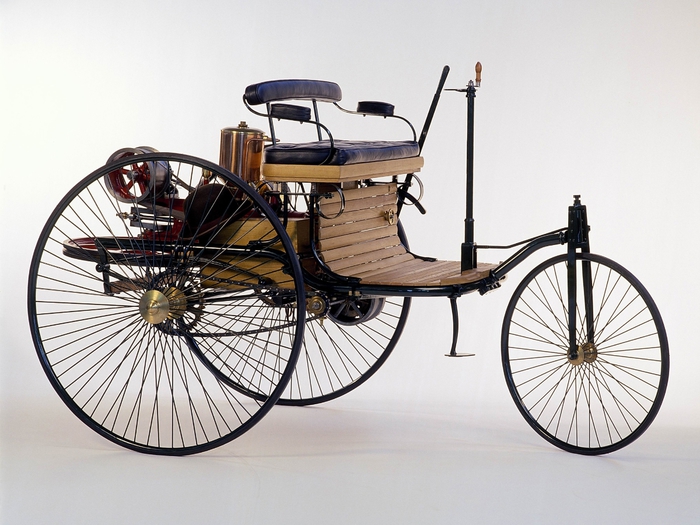
Nimets Maybach proponuvav not vyparovuvaty gasoline, and dribno rozporoshuvat yogo in the air. It was safe to evenly spread the sums over the cylinder, and the vaporization itself was already in the cylinder under the pressure of the heat. For safe sawing, the gasoline was smoky with a stream of wind through the dosing jet. The jet hovered at one or the other opening at the pipe, which was ripped perpendicular to the wind flow. For the pressure of pushing forward, a small tank with a float was used, which lifted the riven at a given height, so the amount of gasoline, to get wet, was proportional to the amount of weight to come. The carburetor is formed in such a rank from two parts: float chamber that mixing chamber. At the cell, the fire was coming from the tank along the pipes and trimmed with one even float, which lifted at once from the equal fire and for the filling, with additional weight, lowering the neck and at the same time blocking the access of the fire. The amount of sum that is delivered to the cylinder was regulated by turning the shutter (throttle).
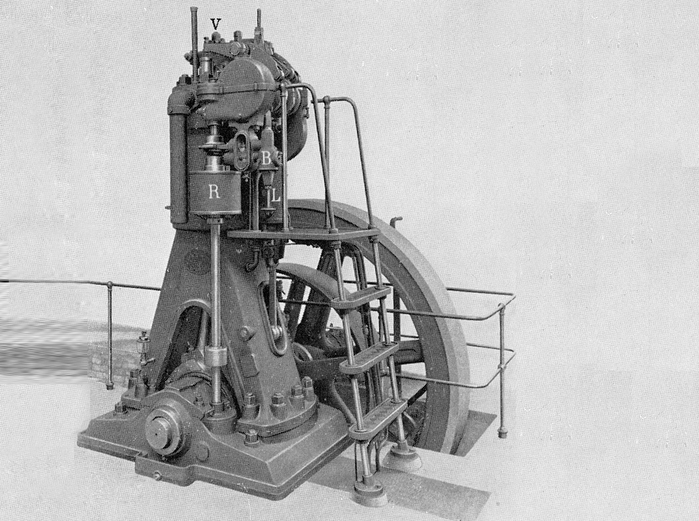
German engineer Julius Daimler. richly rokіv pratsyuvav at the firm Otto і buv a member of the її pravlіnnya. On the cob of the 80s, having propagated to his boss the project of a compact gasoline engine, which could be used on transport. Otto (like Watt in his time in a similar situation) coldly put himself up to Daimler's proposition. Todi Daimler, together with his friend Wilhelm Maybach, having made a bold decision - in 1882 they came from Otto's company, they brought a small machine near Stuttgart. In 1883, a number of creations of the first gasoline engine came from a fire in the form of a baked empty tube, injected into the cylinder.
Tim an hour later, Karl Benz, head of the company Benz and K in Mannheim, having developed his engine with electric priming. In 1886, roci vin launched a tricycle car, which can be driven by the first reference car. Togo rock Daimler vbuduvav dvigun at the body.
The first engines of the internal combustion were single-cylinder, and, in order to increase the exhaustion of the engine, they sounded to increase the volume of the cylinder. After that, the increase in the number of cylinders began to grow. For example, in the 19th century, two-cylinder engines appeared; The rest were driven in such a way that one stroke of the piston was broken in the dermal cylinder. Zavdyaki to whom the good evenness of the wrapping of the crankshaft was reached.
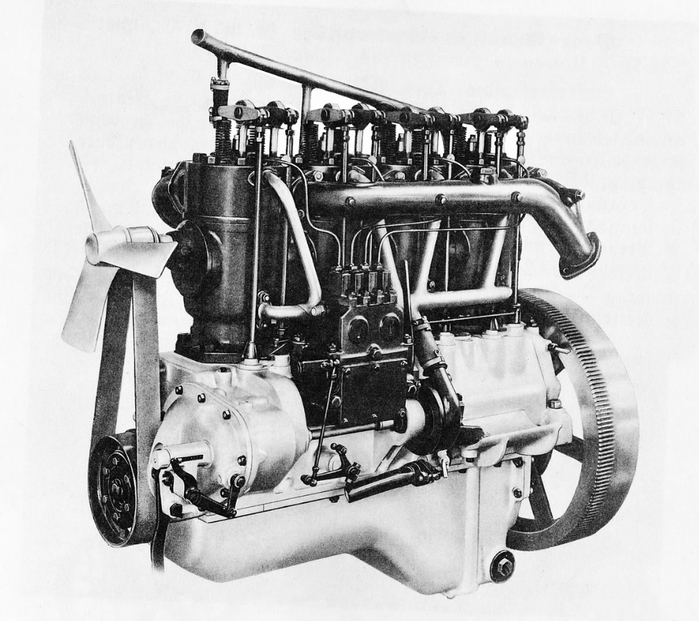
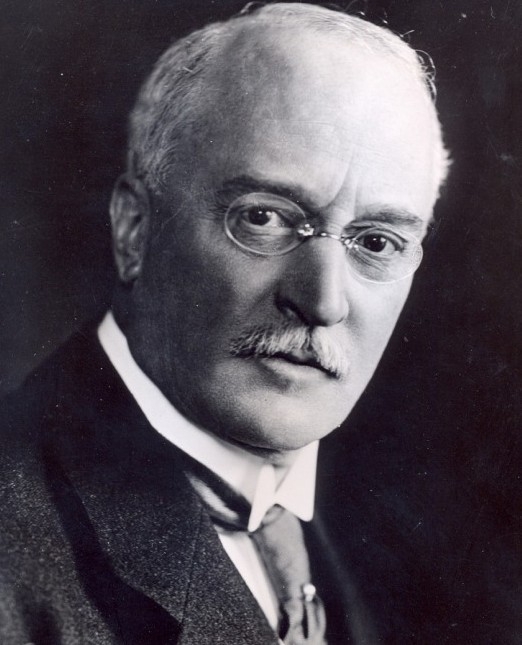
The history of the creation of a diesel engine.
In our time, the word "diesel" among the majority of people is more associated with the engine of internal combustion due to burning in the pressure, which works on a rare fire. And few people know that this is the motive for names in honor of the German winemaker - Rudolf Christian Karl Diesel (born 1858-1913)
Rudolf's fathers were palіturniks, booksellers. Svіy rodovіd sіm'ya vede from the Thuringian town of Pesneka (Nimechchina). However, Rudolph was born at Paris on 18 February 1858.
My father, Theodore Diesel, lived in rich fates at his place, and no one knew what the stink of them. Ale 1870 the Franco-Prussian war began and the Diesels had a chance to move to England. Later, the boy was brought up to relatives up to the town of Augsburg (Nimechchina). There Rudolph finished the Vishcha Polytechnic School in Munich. Music, poetry and imaginative art entice Rudolf as much as mathematics. The young man's workmanship was phenomenal, and the knowledge at the reach of the mother chimed in.
Nevdovzі Professor Carl von Linde zaproponuvav his position as director of the Parisian branch of his company. The vineyard of the "Linde refrigerator" zatsіkav Diesel problems of thermal dvigunіv - steam engines and motors of internal combustion, like zavdyaki vinhohod Nikolaus August Otto appeared.
For 10 years, Diesel has built hundreds of seats and refurbished an absorption-type engine, which has been converted to ammonia. The fantasy of a young engineer did not know the cordons - in the form of miniature motors sewing machines to gigantic stationary units, like victorious sony energy! And yet, Diesel did not go into creating anything, even if he wanted an efficient engine on paper.
Asking a method to encourage economical dvigun, proponing in 1824 p. French officer Nicola Leonard Sadi Carnot (1796-1832), Diesel relatively twisted yogo single, immortal treatise "Think about the destructive power of fire and about machines, building victories". According to Carnot, in an economical engine, it is necessary to heat up a working body to the temperature of a hot fire rather than a “change of duty”, that is. Swiss grip. If you are sleeping hotly, you need to be smart enough to keep the temperature constant. And it’s only possible with an one-hour burning fire and expanding gas that heats up.
At 1890 p. Rudolph moved to Berlin and... after replacing the ammonia, let's heat up the squeezing air. "At the innocent pursuit of the method, as a result of the endless roses, an idea was born, which reminded me of a majestic joy," wrote the winemaker. often zі zgoryannyam, expand the burning sum so, schob yakmore heat vikoristovuvat for barnwork. "
At 1892 p. Diesel, having taken off the patent, which appeared to be one of the most expensive in the world. And then we will publish the description of the engine. "My idea, having written in sim'ї, on the flooring, stands out everything that is created in this gallery of dosi, which can be boldly said - I am the first in this new and most important distribution of technology in our small Earth culture! I go ahead of the greatest mind іv people on the sidelines ocean!"
None of the theoretical motives called out such a majestic interest among the fahivtsiv. Prote bolshist estimated the idea as practically unimaginable. Ale buli іnshі apply. "I read your work with great interest: so radically and daringly, no one else, who, having broken the steam engine, went out of the sun, did not speak. - Professor M. Schratter wrote. Diesel viriv at his car.
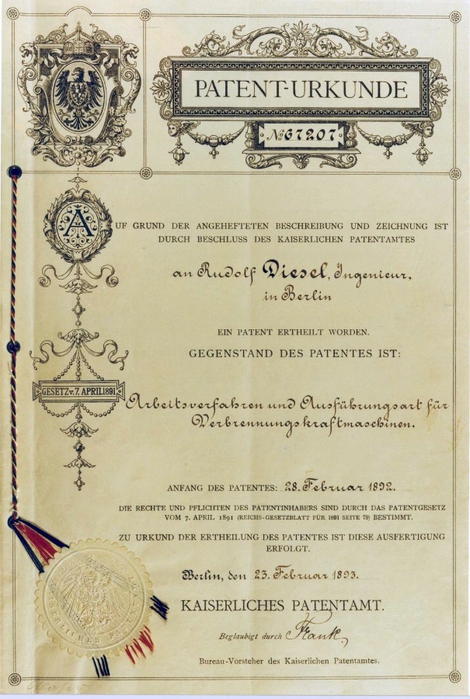
1893 rec. Diesel engine. Stage 1.
The first dosvіdcheny dvigun buv inducements already in 1893. in Augsburg. Diesel himself cherubed his life. At the same time, they tried to taste it, the last last moment swayed, the winemaker and yoga pomіchnik did not perish a little. The engine vikoristovuvav like a pale brown coal drank and buv without water cooling of the cylinder walls.
Having failed to achieve a positive result on the coal saw, Rudolf Diesel after trying the vicorate of light gas, residually sounding his choice on a rare fire.
1894 rec. Diesel engine. Stage 2.
At the fierce fate of 1894, the trials of another long-term dvigun began, in which, like a pale vicorist, it was already extinguished.
1895 rec. Diesel engine. Stage 3.
After the first two failures, I constructed the third model. "The first dvigun is not working, the other one is not finished, the third one will be garnied!" - showing Diesel to his wheel Vogel. At 1895 p. the folding of the third stage has ended, to avenge all the main elements of the possible diesel engine. In truth, the garni appeared! And for this creation, Diesel had a chance to see the richness of his cob ideas. For example, it was not possible for us to reach the results of a robotic engine without water cooling. Wanting the possibility of such a robot, it was theoretically transferred by Diesel, it was tested for an hour, and then they overshot it, which is practically worthless. Positive results appeared only after that, as the engine was cooled by water, and the supply of a rare fire to the cylinder and that sawing began to be used for the help of a squeezed wind. From the drive of the introduction of water cooling Diesel, explaining to the robot the results of testing the first last dvigun at its additional station at the Union of German Engineers, say on the offensive: "I have great respect for those who worked without a water shirt and for such a rank om bula brought the possibility of practice Without water cooling, it was theoretically transferred.
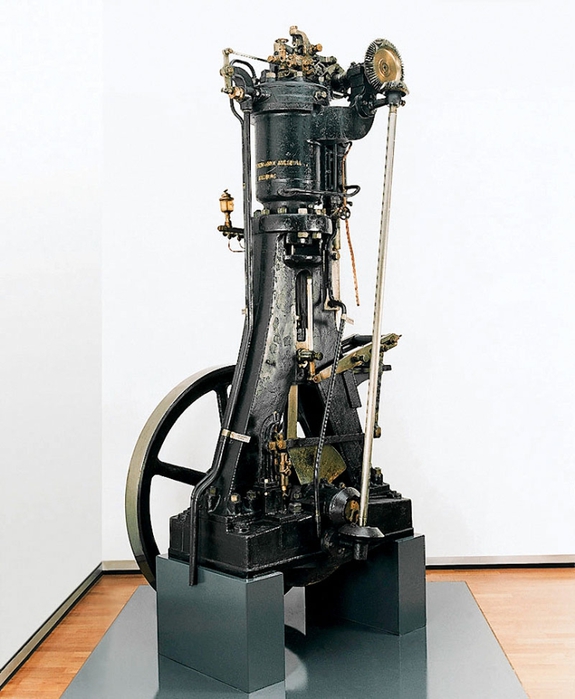
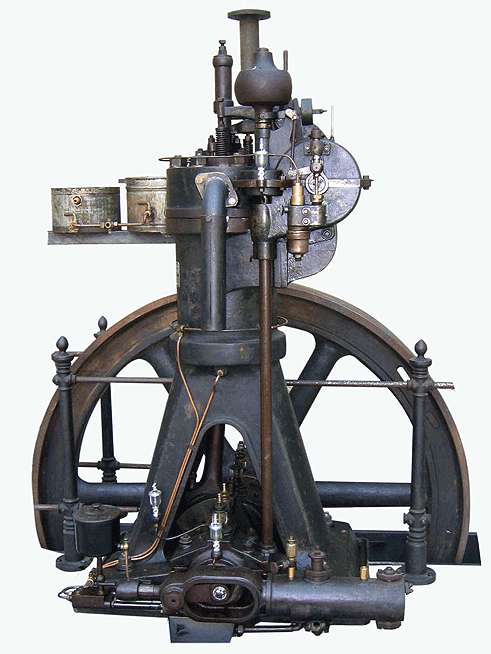
1896 rec. Diesel engine. Stage 4.
Naprikintsі 1896 residual impulses, the fourth version of the last dvigun to the tension of 20 k.s.
During official trials in the fierce 1897 r. for a year, the effectiveness of KKD yoga becoming 26%. There are no more such ostentatious examples from the current movements at that time. The dvigun's robot zdіysnyuvala for chotiri tact. For the first stroke of the piston, it was wetted into the cylinder again, for the other piston it squeezed up to about 4 MPa, heating up to about 600 ° C. І in the middle of the press-fired air through the nozzle (squeezed under the pressure of 5-6 MPa), it began to be injected sporadically (gas). Spend some time in the rozіynіy poіtrya, scorchingly fell off and burned mayzhe at a constant pressure (although not at a constant temperature, as if ochіkuvav Diesel, patenting the cycle). The gas supply to the cylinder was about 1/5th of the third stroke of the piston. On the way, there was an expansion of the combustion products. For the fourth stroke of the piston - zdіysnyuvavsya release of fire, which burned into the atmosphere. The working cycle of the created dvigun is already reborn like a patented one.
The Exhibition of Steam Engines in 1898 at Munich became the culmination of the remarkable success of Diesel. Zamovlennya on dvigun nabuvali German and foreign enterprises in great demand. A golden board fell on the 39th river engineer!
Throwing the doslizhennya, Diesel hit the commerce. Mayuchi already a six-million camp, having fallen asleep under the business of electricity generation, financing Catholic lotteries, buying and selling all kinds of firms. But, once again, the engine of the "Diesel system" is still welcome for that hour, there will be no sales!
The scandal vibrated, if the first diesels appeared not in good working order. Please, please, zupinyayutsya viplati Diesel. The Augsburzka factory, which belonged to the winemaker, went bankrupt. Through a great number of other failures, the diesel engine has improved its reputation. The need for accuracy in the preparation of low details significantly outweighed the level of capacity of the large factories. Crim of technological difficulties, it has become a source of information about the creation of new heat-resistant materials. Deyakі firms declared about the "inadequacy" of diesel engines for serial production.
Zіtknuvshis with the wall of unkindness in Nіmechchinі, Diesel made a lot of money from foreign crafts. In France, Switzerland, Austria, Belgium, Russia and America.
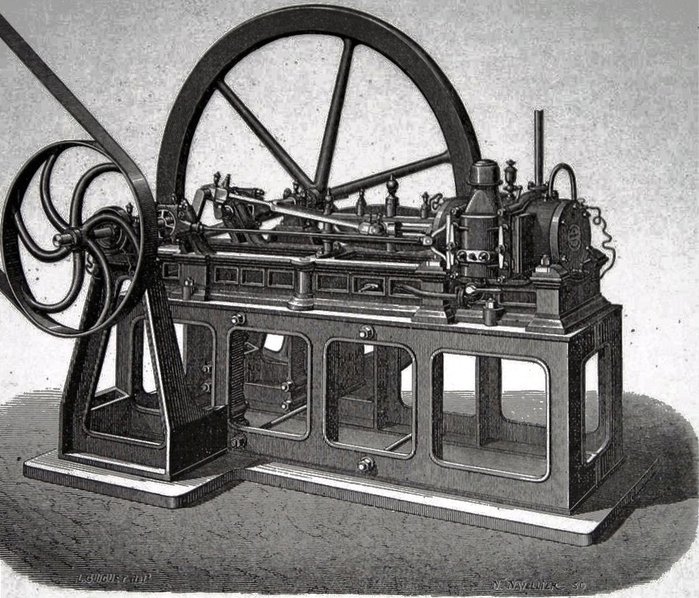
1903 rec. The suitability of a diesel engine in Russia.
Just like a word of pronouncement, the news about the new dvigun flew around the world, Emmanuel Nobel, the head of the machine-building plant in St. Petersburg, clearly understood that a great future was prepared for diesel engines in Russia. To that in Russia there are no reserves of oil, so as to bring it to a clean look, without reworking, it has become a fire for a new dvigun. Well, obviously, it was not only for all the great Russia, but also for the Nobel family, like the oil refinery partnership “Brother Nobel”. I in 1897 Emmanuel Nobel having tried out a patent for the preparation of a dvigun in Russia. Prote Diesel, who bathed at the exchange of all-world glory, asked for a foreign price - pivmillion rubles in gold. Oberezny Swede vyrishiv check for more vіdpovіdny to please the moment. Through the river, the designer, having won a realistic statement about the laws of the business, having reduced the price to 800 thousand. stamps.
Having given a patent, Nobel created an act of inhuman altruism: Russian factories vydpovidnogo profile, shriveled by chairs patent, rozpochati versatility of diesel engines. However, we got word that at that moment the authority of the dvigun on the Zakhod had been greatly stolen, there were no people who were wrong. I engineers of the Nobel plant began to independently develop a modification of the engine, which works on oil. At the leaf fall of 1899, the "naphthic" diesel engine is 20 k.s. buv ready. In 1900, at the Paris Exhibition, the leading designer, Professor Georgy Pilipovich Depp, proved that the Russian diesel engine would surpass its foreign counterparts. The main task for the Nobel was the decision of the military department to install diesel engines on the military ships. In 1903, the fate of St. Petersburg, and navit at the Kolomna Machine-Building Plant began to produce engines of 150 horsepower. Diesel engines were installed in bulk on two ships of the Nobel partnership - "Vandal" and "Sarmat". The successes of the naphtha engine in tandem with the steam engine were obvious, that the steamship companies began to equip their ships with diesel engines.
So far, the European powers have quarreled over who will take on the manufacture of motors a la Diesel, їх serial production made by Russia, moreover, there are a number of types: stationary, swidkokhidny, shipboard, reverse and other. (Nafta Nobel in Nobel engines for Nobel pennies). In Europe, a diesel engine began to be called a "Russian dvigun". Diesel from the satisfaction of spivpratsyuvav with Russian crafts - the stench is the only one who regularly pays the vineyard owner a dividendi.
Proceedings
"Vinakhid... it was no more a product of creativity: it was the result of a mutual connection between an abstract thought and a material world ... A winemaker of history does not respect someone who, with this lower level of rank, has spoken the first similar idea ї, but the one who having created his own idea, which I may have thought, perhaps, in the minds of the impersonal people ... "
The appearance of an inexpensive engine in operation meant the victory of oil over the Vugills, which was not befitting to the rulers of the Vugillian Ruhr. Regardless of the success of the new type of dvigun, the attacks of the unkind people on Rudolf Diesel and that dvigun did not weaken: "Diesel is not to blame for anything ... you only have to choose wine..."
In 1912 Rudolf Diesel comes to America. INZHENERNA GROMADSKY SVITA ZVIKHIKA BACHITI in the NOOMU of the Great Permovitian Fakhivtsia, Shcho is known in Zenіti Slava, - the Narrally New Yorkski Gazeti showed their readers about the Diesel Diselle, the famous diploma of the Munich. At the lecture halls, de vin speaking from dopovіdami, at the lobbies of the hotels and the foyers of theatres, correspondents used to take this in the log. Edison himself is a charmer of American winemaking - even publicly declaring that Rudolf Diesel's mover is a milestone in human history.
Correct, strimany, dressed up in a strict black tailcoat, Diesel steadfastly enduring the long-standing public appearances. I've been waiting for American engineers, who have heard the same thing, do not have a moment to suspect that they are a glimmering addition, which rozpovida on the beautiful. English about the prospects of his dvigun, having rebuked at the most soulful station, close to complete collapse, and without saying a single word about those difficulties, mistakes, failures, attacks, and mistrust, with which it was part of the life of yoga wines.
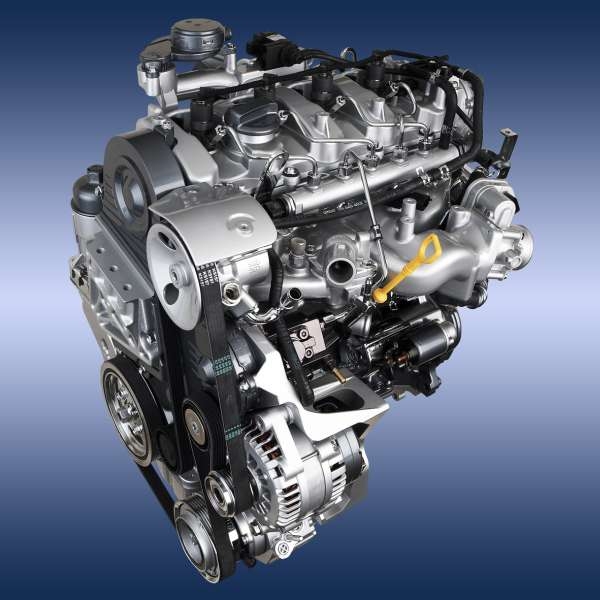
And at the same time, in front of or before the inevitability of its collapse, immediately after turning back to Munich, Diesel bought the shares of an electric car company on a position pennies, and somehow it went bankrupt. As a result, Yomu had a chance to pay off all the servants and lay down houses in order to realize his remaining plan, in which there were no assignments. The advancing river of Diesel has risen from roses: one bunch of wines having visited Paris, Berlin, Amsterdam, and then together from the retinue seeing Sicily, Naples, Capri, Rome. "We can say goodbye to these times. We can't get any more of them." Having missed such a wondrous phrase once, but the squad did not turn on her respect, but guessed and understood it only later, if everything had already become. Let's take Diesel all the way to the Bavarian Alps to Sulzer, having done engineering practice at the plant. The old friends were struck by the change that became the last hour from Rudolf. Zavzhd strimaniy and amulets, vіn nіbi without a trace, having spent tі yakosti and with visible satisfaction, having jumped on the unsafe mountain roads, going into risky entries.
Until the end of summer 1913 swayed the financial crisis. Diesel became a complete bankrupt. The first axis of this moment, which has recently been introduced into the settlements, which are well paid in American firms, has been given a chance for the proposal of a new engine-building plant in England to occupy in them a settlement less than an engineer-consultant. Having found out about it, the British Royal Automobile Club turned to the new s of work to prove it at one of the meetings of the club, on which Diesel is also good luck and began to get ready for a trip to England. At the same time, a small interval of time to work out deyaki vchinki, analyzing like a year near Rudolf Diesel to make a vysnovka, what a tragic decision he had already taken.
After seeing the squad to stay with their mother, they got drunk on the cob of spring alone at their Munich booth. First of all, if you’ve killed someone, let in some servants that you’ve lost, and ask your elder son (tezh Rudolf) to arrive before the new one. Behind the sin's ways, the tse bula is wondrous, that sumna zustrich. Having shown Yoma where to lie at the booth, important papers are saved from some wardrobes, giving reliable keys and asking to try the locks. As soon as the son of the wines came out, he was busy reviewing the business documents, and the servant, who turned to the attacking wound, revealed that the fireplace was clogged with ashes of the burning papers, while the master himself was in a gloomy, humbled state.
A few days later, Diesel went to Frankfurt to his daughter, where the squad was already checking. Having spent a few days with them, having traveled alone on the 26th of April to Ghent, having sent out a leaflet of squads and a handful of leaflets to friends. The leaf is wondrous, zbentezhenim and svіdchiv about the strong discord of the author.
29 spring 1913 in Antwerp, Diesel was getting ready for the steam "Dresden" before the fire... On the upper deck, the evening passed calmly. Diesel told his companions about the squad, his wines. Ale їх cіkavila politics. Winston Churchill, appointments as Lord of the Admiralty, having begun the reconstruction of the English fleet, it was even more troublesome for two of Diesel's new acquaintances. The stinks were Germans, and the war in the Balkans raged on the first spark of the future war between Germany and England. Churchill was about to revitalize the English fleet. A subtle politician, having foreseen the war against Nimechchina. For this reason, the contact with the talented engineer Diesel, having known that in the Kaiserivsky Nіmechchinі on the battleship, the armor on the "Prince Regent", was already delivered a rich cylinder ship engine, designing by Diesel, which gave a significant advantage to the speed. In addition, Diesel engines were quickly attached to underwater chovniv. Then, perhaps, not so vipadkovo, on board the German steamboat, two Germans opinated with Diesel's companions, ready for anything for the sake of Nimechchini.
Close to the tenth evening, Rudolf Diesel bowed to his acquaintances and went down to the cabin. Before that, as if opening the door, I called the steward and asked to wake up the yogo vranci exactly about 6:15. At the cabin of the wines, vyinyav z valizi pajama and rozclave її on the bed. A hero from the intestines of the year, curled them and hung on the wall an instruction from a pillow ... And no one else is better.
Glancing around the cabin, showing: soft, prepared by the steward for sleep, do not get cold; the luggage is not open, wanting to put the key into the lock; kishenkovy anniversary of Diesel buv provisions so that the arrows can boulo bachiti being lying on a lizhku; the note was lying open on the table and the date of 29th of spring was marked with a cross. It was suddenly clear that at the hour of the ranking round of the ship, a chergovy officer revealed whose droplets and folded coat, put their slats in. Viyavilosya, scho stench lay before Diesel.
Ten days later, the team of a small Belgian pilot boat sailed a corpse in the wind of the Pivnichny Sea. The sailors took from swollen fingers kiltsya, in the intestines they knew hamanets, a case for eyepieces and a first-aid kit from the intestines. The body, inheriting the sea sound, saw the sea. Arriving to Belgium on the viklik son of Rudolf Diesel - confirming that all these words belonged to Yogo Batkov.
Relatives of Diesel were perekonan, scho vіn laid their hands on themselves. Not only the marvelous and ignorant behavior of Diesel in the rest of his life spoke to the arrogance of this version, but also the deacons of the situation that were announced in the past. So, before his departure, he presented the warriors with a bag and asked them not to spend a couple of days. 20,000 marks fell off the wall. Tse bulo everything that was lost to Diesel's majestic status. And more: flying to England, Diesel took from him not a golden year, like a plant, but intestinal steel ...
Visnovok.
The light of day for Rudolf Diesel to complete a rare technique in the history of technology: starting to write a name from a small letter. Tse - krok at eternity.
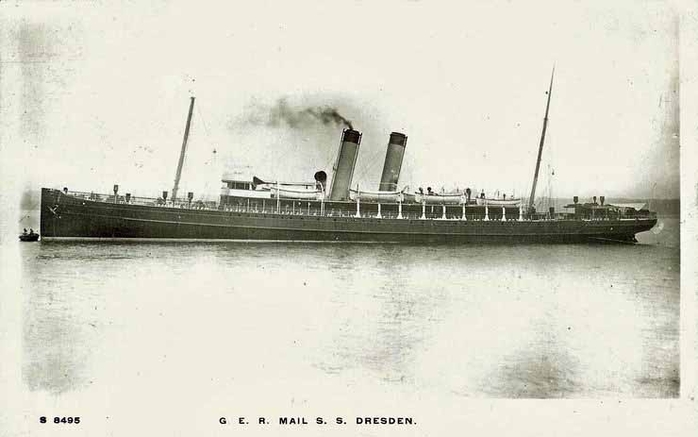
Porom "Dresden"
Khoch yak namagalis engineers of the XVIII-XIX centuries. move the KKD, vin all the same, being overwhelmed by something low. , which releases a couple in dovkіllya, in principle, not a moment of mother KKD more than 8-10% (for example, in a steam engine Watt's wine becomes only 3-4%). I want to build more exhausting steam installations every year, they successfully stagnated in the industry, on the inlet and water transport, it was impossible to win for them.
Record holder of our days
The most intense modern dvigun internal combustion is important Wartsila-Sulzer RTA96-C. Vіn may expand 27 by 17 m and develop tightness close to 109 yew. l. With. This unit is produced on fuel oil and vikoristovuєtsya in shipbuilding. The title of the most advanced engine is claimed by the installations on the American supercar Vector WX-8. Yoga pressure 1200 l. With. (I want the press to publish the figure 1850 k.s.).
Low fatigue steam engines explain the steps of the process: when the fire is heated, the water turns into steam, the energy that turns into mechanical work. That is why steam engines are brought to the dvigunіv zvnіshny goryannya. And what will become, like vikoristaty without intermediary internal energy of the fire?
The first one, who came to know the motive force of internal combustion, was a Dutch physicist of the 17th century. . In the midst of yogo numeral reports and wines, the project of the dvigun, which is based on black powder, has been ruined. In 1688 p. the Frenchman victorious, having invented the ideas of Huygens and having designed an attachment like a cylinder, in which the piston freely moved. Let's throw the piston of the pov'yazany over the block with a cable with a vantage, which is also lifted and lowered behind the piston. At the lower part of the cylinder, gunpowder was piled up and fired. The ghazis, who had settled down, expanding, pushed the piston uphill. After that, the cylinder and the piston from the outer side were poured with water, the gases in the cylinder cooled, and the pressure on the piston changed. The piston under the influx of the vlasnoy vag and the atmospheric pressure descended, raising it at the same vantage. Unfortunately, such an engine was not suitable for practical purposes: it’s necessary to fold the technological cycle of yoga robots, but it’s not safe to do it in victorious wines.
As a result, Papin looked into his own windings and took up steam engines, And I will come more and less successfully, I will try to design an engine for internal combustion, after 18 years of work, the Frenchman José Nicephore Niépce, who became famous as a winemaker of photography. Together with his brother Claude Niepce, the vinaish dvigun dvigun, like a vicorist, like a burning coal, drank. The names of the wine growers “pereolofor” (in the translation of the Greek language “not carried by the fiery wind”) dvigun buv patents, prote to yogo in virobnitstvo did not go far.
Across the river, the Swiss winemaker François Isaac de Rivaz, having taken away from France a patent for a crew, which is collapsing by the engine of internal combustion. Dvigun buv cylinder, in which the water was falling, obedience for additional electricity. When vibrating and expanding the gas, the piston moved uphill, and for an hour, the ruhu down brought the belt pulley to the bottom. Viyna de Rivaz, as an officer of the Napoleonic army, made her finish the work on the vineyard, which gave life to the entire homeland of water dvigunіv.
Decilcoma by fates earlier, French engineer Philip Lebon pidijshov is close to reaching the door effective dvigun internal combustion, which works on light gas, a sum of combustible gases, the main rank of methane and water, which is taken away during thermal processing of coal.
Invisible mitets. Portrait of Denis Papin. 1689 p.
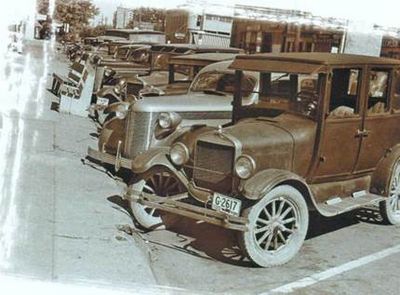
American cars of the 1930s.
Sche in 1799. Lebon took out a patent for the method of extracting light gas for additional dry distillation of the wood, and after a few years he developed the project of the engine, in which two compressors and a mixing chamber were transferred. One compressor can be pumped into the squeezing chamber, the other squeezing lamp from the gas generator. Gasoline sumish reached the working cylinder, de spalahuvala. The dvigun buv podvіynogo dії, i.e., the working chambers, which alternately actuated, were on the sides of the piston. In 1804 p. the culprit died without grasping his idea in life.
At the onset of fate, in the minds of Lebon, there were rich winemakers, the deacons took away patents on their engines, for example, the Englishmen Brown and Wright, as if victorious, like a burning sumish with light gas. The engines were cumbersome and unsafe in operation. The foundation for the folding of the lung and the compact dvigun was laid only in 1841. the Italian Luigi Christo-Foris, who, having inspired a dvigun, who practices on the principle of "crushing-borrowing". Such a dvigun maw pump, which, having given it like a pale, occupant motherland, was extinguished. Yogospіvvіtchizniki Barzantі and Mattochchi developed this idea in 1854. presented the first reference engine of internal combustion. Vіn pratsyuvav on sumishі povіtrya zі luminous gas and mav water cooling. Since 1858, the Swiss company "Esher-Vis" began to release yoga in small batches.
At the same time, the Belgian engineer Jean Etienne Lenoir, stumbled upon Lebon's research, after a few recent tests, having created his own model of dvigun. An even more important innovation was the idea of igniting a fire-spraying sum for an additional electric spark. Lenoir also introduced a water-cooled system and a power system for a short piston stroke. The KKD of the first engine did not exceed 5%, it was ineffectively stained hot and even heated up strongly, but it was also the first commercially successful project of an internal combustion engine for industrial needs. In 1863 p. it was possible to install the car, but the pressure was 1.5 liters. With. it was not enough for a change. Otrimavshi neabiyakiy income from the release of his dvigun, Lenoir stopped pratsyuvati over yogo perfection, і nezabara vіv vіtіsneniya z brіlsh far away models.
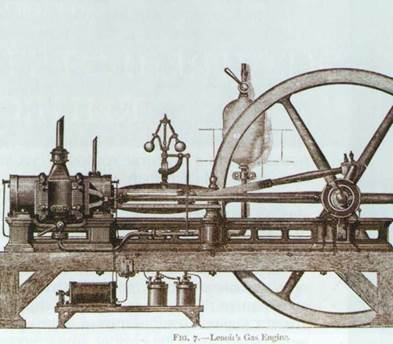
Engine of inner fire J. E. Lenoir.
At 1862 p. French wine maker Alphonse Beau de Rochas patented a fundamentally new addition to the world's first engine of internal combustion, in which the working process of the skin cylinders was carried out in two turns of the crankshaft, then for the chotiri go (tact) of the piston. However, this did not happen before the commercial production of a chotiritactic engine. At the All-World Exhibition in Paris, 1867 Representatives of the Deutz gas engine plant, founded by engineer Nicholas Otto and craftsman Ezhen Langen, demonstrated the engine, designed according to the principle of Barzanti Mattocchi. The whole unit created less vibrations, but it was lighter and it was not difficult to see Lenoir's engine.
The cylinder of the new engine is vertical, the overhang shaft is above it on the side. Uzdovzh axis of the piston to the new rail creaked, tied to the shaft. The shaft lifted the piston, under it, it was rozredzhennya, that was smoking up the sum of the air and gas. Potim sumish salahuvala vіdkritim half-widths through the tube (Otto and Langen were not fahіvtsy in the galuzі elektrotehnіkі and vіdmovilis vіd elektrichnі zalennya). Under the hour, the vice under the piston grew, the piston rose, the gas got bigger, and the vice fell. Piston back under the pressure of the gas, and then, by inertia, we lifted the dots, the docks under it were not re-opened again. In this way, the energy of the burnt fire was victorious in the engines with the maximum fullness, the KKD of the first engine reached 15%, so that the KKD of the best steam engines of that hour was overturned.
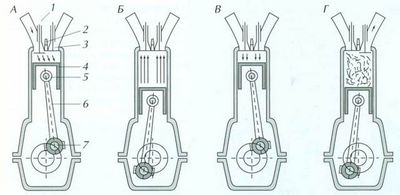
Working cycle of a chotiritactic internal combustion engine.
A. Inlet of the working bag. Piston (4) moves down; through the inlet valve (1) fuel sumish enters the cylinder. B. Squeezing. The piston (4) moves uphill; inlet (1) and outlet (3) valves closed; the vice at the cylinder and the temperature of the working sum_sh_ move. 6. Robotic walk (mountain and expansion). As a result of a spark discharge of a spark plug (2), a sparkling sum is burning near the cylinder; the pressure of gases when burned, flows into the piston (4); piston movement is transmitted through the piston pin (5) and connecting rod (6) to crankshaft(7) R. Gas release. The piston (4) collapses uphill; exhaust valve (3) open; gases that were pumped out of the cylinder should go to the exhaust pipeline and let into the atmosphere.
Otto, on the vіdmіna of Lenoir, did not rush at his reach and firmly developed success, continuing to work on his wine-making. In 1877 p. You have been given a patent for a hot-tact motor with spark loans. This chotimatic cycle and at the same time vikoristovuєtsya in the basis of the work of most gasoline and gas engines. Already through the river, the novelty was launched at the virobnitstvo, protesting the scandal. It turned out that Otto, having violated the copyrights of Beau de Roche, and after the judicial review, Otto's monopoly on the chotiritactny dvigun was annulled.
Vikoristannya, like a burning light gas, strongly sounded the area of stoking the first engines of the internal combustion. There were three gas plants in Europe, and in Russia there were only two gas plants in Moscow and St. Petersburg. Shche in 1872. the American Brighton, like before Kristoforis, tried to make vicorist like a burning gas, but then he switched to gasoline, which was light to the petroleum product.
In 1883 p. a gasoline engine appeared from a fire in the cylinder of a baked empty pipe, found by German engineers Gottlieb Daimler and Wilhelm Maybach, and many spivrobitniks of the Otto company. However, a dvigun on a rare fire could not compete with a gas one, until it was created attachments for the evaporation of gasoline and the removal of the fire sum from repetitions. A carburetor with a jet, a prototype of modern modern carburetors, was found by the Ugrian engineer Donat Banki, which was born in 1893. otrimav on his own patent. Banks zaproponuvav, zam_st viparovuvati gasoline, dribno rozporoshuvat yogo in povіtri. Zim safely poured gasoline over the cylinder, and the vaporization was carried out under the influx of heat squeezing near the cylinder.
The back of the engine of the internal combustion was less than one cylinder, and the increase in the tightness of the engine had to be increased. However, it could not continue indefinitely, and as a result, it happened to increase the number of cylinders. For example, XIX century. the first two-cylinder engines appeared, from the beginning of the 20th century, chotiricyl-indrovi began to expand, and at the same time no one was welcomed by twelve-cylinder engines. Improving the movement is more important in the case of increased tension, the principle of the scheme is permanent.
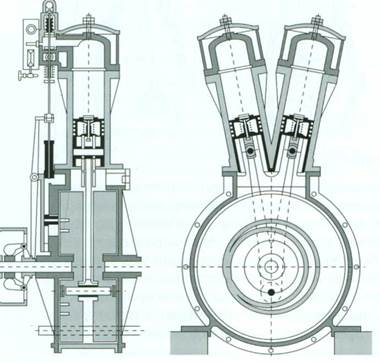
Two-cylinder engine of G. Daimler, view from two projections.
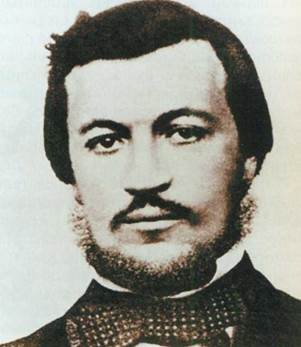
If Rudolf Diesel has developed the engine of a damp design for more than a century, he hasn’t diesel engines can but the floorings are sensitive to the bitterness of the pale. Even better than your engine Diesel is bachiv itself in the fact that wine can be used for whatever, from a coal saw to a processed corn cake. Modern turbodiesels with the stubbornness of the paliva vimagayut better than the good of the purified diesel fuel with a low volume of cheese. Even so, a lot of outrageous car dealers did not dare to sell their diesel models in Russia.
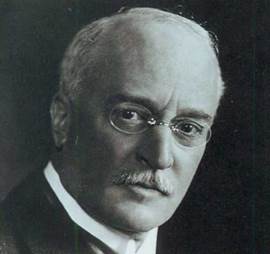
R. Diesel.
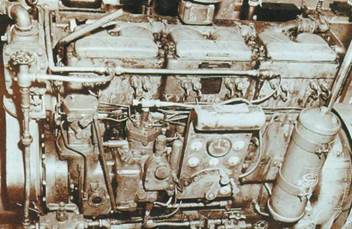
Dvigun R. Diesel.



